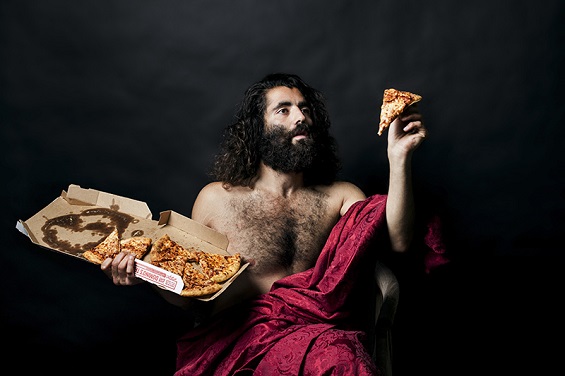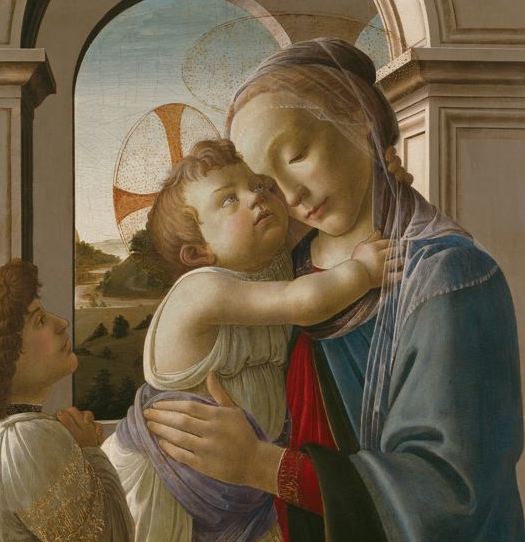The Internet recently was filled with reports that Pope Francis said “yes.” Alas, it turns out to have been a misunderstanding:
According to initial reports Francis had been comforting a small boy over the death of his dog, when he declared, “One day we will see our animals again in eternity of Christ. Paradise is open to all God’s creatures.” Even The New York Times ran the story on the front page.
This is the progressive Francis we all know and love: he’s willing to talk about the divorced and remarried receiving communion and he boldly extends “all dogs go to heaven” beyond its customary canine-exclusive borders.
Except Francis didn’t actually say this. As David Gibson revealed this week, it was a different Pope—Pope Paul VI, who died in 1978—who gave the young boy the soothing pep talk. That’s the Francis effect: he gets the credit for every nice thing a Pope has ever said.
Tracing how the story got started, David Gibson notes that Francis did give a talk in November in which he claimed that the Christian belief in the coming of a “new heaven” and a “new earth” would mean “the bringing of all things into the fullness of being.” And then it was off to the races:
“One day we will see our pets in the eternity of Christ,” the report quoted Paul VI as telling a disconsolate boy years ago. The story was titled, somewhat misleadingly: “Paradise for animals? The Pope doesn’t rule it out.” It wasn’t clear which pope the writer meant, however.
The next day, Nov. 27, a story in the Italian daily Corriere della Sera by veteran Vaticanista Gian Guido Vecchi pushed the headline further: “The Pope and pets: ‘Paradise is open to all creatures.’” Vecchi faithfully recounted the pope’s talk about a new creation, and also cited Paul VI’s remark. But the headline put those words in Francis’ mouth, and that became the story.
The Italian version of The Huffington Post picked it up next and ran an article quoting Francis as saying “We will go to heaven with the animals” and contending that the pope was quoting St. Paul — not Pope Paul — as making that statement to console a boy who lost his dog. (That story, by the way, is nowhere in the Bible.)
The urban legend became unstoppable a week later when it was translated into English and picked up by the British press, which had Francis saying: “Paradise is open to all God’s creatures.”
Commenting on the episode, Mary Eberstadt explains why, in recent years, the cause of animals rights has been taken up by the religious:
In part, the answer is that religious concern for animals comes as a surprise only to readers unacquainted with religion—a number that’s increasing, as many surveys show. As many “nones” seem not to know, theological concern for animals is in fact longstanding, as the dietary rules of Judaism concerning slaughter are the first to show. The Catholic Catechism states that animals are “owed” moral treatment, and many Christian thinkers have agreed; theologian Charles Camosy’s recent book For Love of Animals is a useful primer here. Among others, Trappists, Cistercians, Benedictines, and a number of saints have adopted vegetarianism or otherwise debated the requirements of mercy regarding animals. Recent popes have also appealed variously for clemency toward birds and beasts. Benedict XVI, to name one, deplored the industrial creation of foie gras, to the approval of PETA.
Today’s new moral energy is also emanating from such quarters for another reason: the similarity discerned by some people between the industrial trashing of animal life via factory farms, and the industrial trashing of human life via factory abortion. When Pope Francis decries the tragedy of a “throwaway culture,” he is not only talking about fast-food wrappers or unwanted kitties—as his 2013 Apostolic Exhortation Evangelii Gaudium, section 214, makes clear.
And guess who thought dogs definitely wouldn’t go to heaven? The Pope Emeritus:
Francis’ predecessor, Pope Benedict XVI, already tackled this topic — and reached a conclusion that might anger some dog lovers. For the now-retired Pope Emeritus, an animal’s death simply “means the end of their existence on earth,” and that they “are not called to eternal life.”



